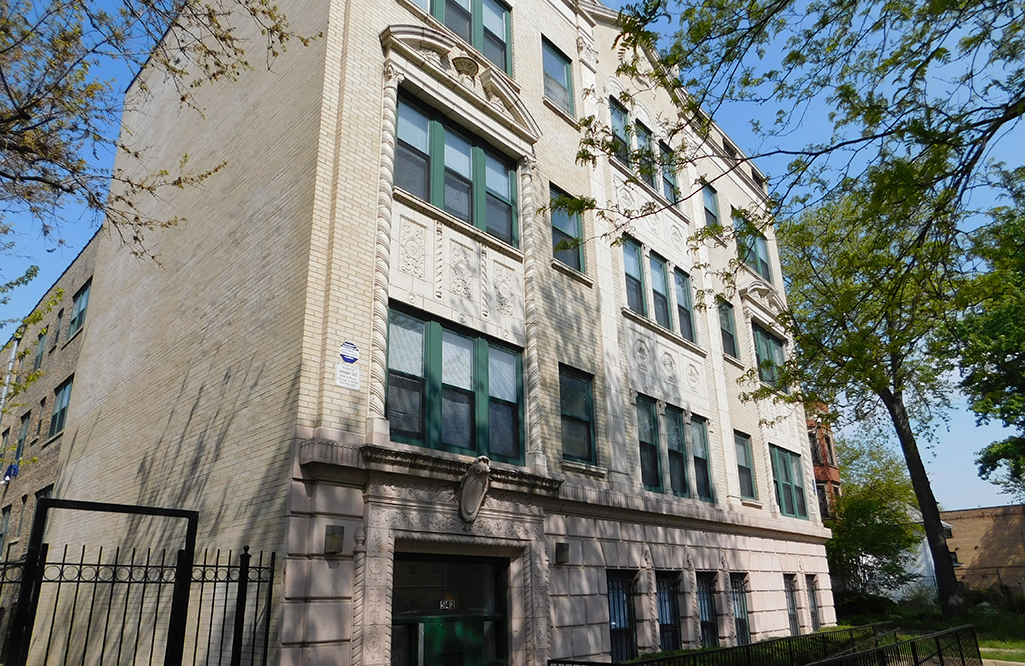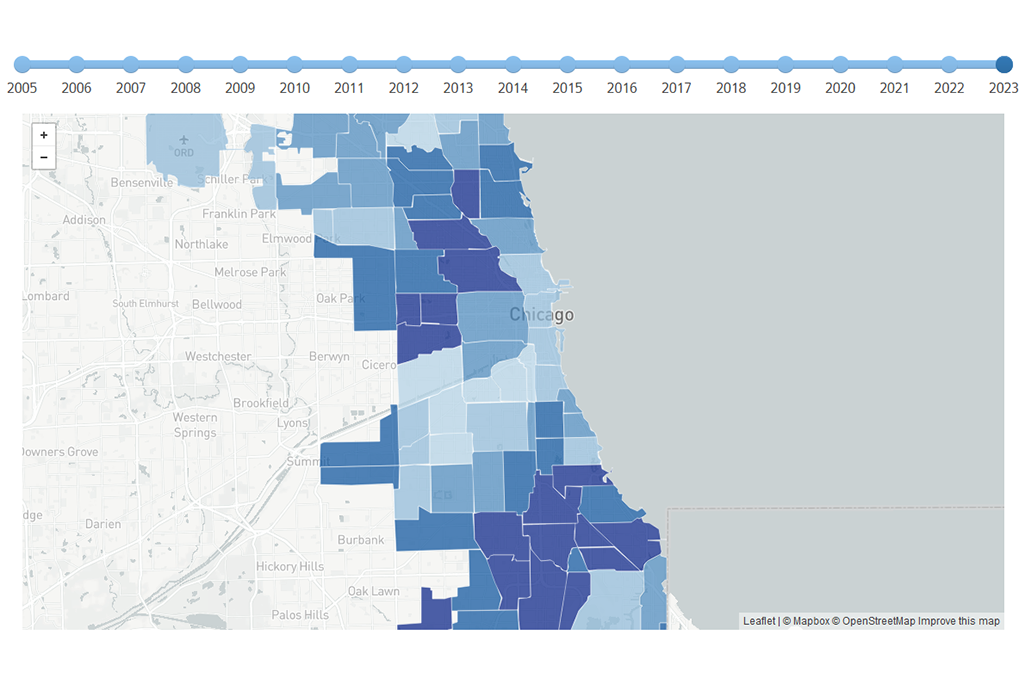By Stacie Young, Director
The Preservation Compact
Annual reports like The Institute for Housing Studies’ State of Rental Housing in Cook County are an important resource for benchmarking and tracking changes in the County’s affordable rental housing landscape. While none of the findings in IHS’s report should ring new alarms, some ongoing trends deserve attention: some lower-income renters moving out, and rents continuing to increase in some stronger neighborhoods.
Report numbers also show that declines in 2-4 units have persisted. Some Chicago CDFIs know from experience that some strategies are working to stem losses, but we need to move from fretting about losing these vintage Chicago 2-flats to implementing solutions.
Overall, the idea that Chicago’s gap in affordability has not improved will not surprise anyone, but the subtle dynamics found in DePaul’s report may help to drive policy solutions.
To start, we know that not every neighborhood is flooded with investment. In fact, a recent report found that only about 3 percent of Chicago area residents live in neighborhoods that have undergone strong economic expansion since 2000, compared to about 37 percent who live in strongly declining areas.
Why are renters moving out? Some research describes how crime is linked to out-migration and increased poverty concentration, as families move away from disinvested communities in a trade-off for safety and economic opportunity.
On the flipside, some renters continue flocking to a few neighborhoods closer to downtown, driving up rents and making it hard on existing low and moderate-income residents.
These contrasting neighborhood dynamics call for strategies that improve conditions in distressed neighborhoods, and maintain affordability in areas with spiking demand.
The Preservation Compact is a policy collaborative with a diverse set of partners working together to keep rental buildings in good condition with affordable rents. Preservation is an efficient way to protect buildings in low and high-cost markets to protect both subsidized properties, and unsubsidized, naturally occurring affordable housing (NOAH).
To be clear, this is not flashy stuff. In fact, some preservation strategies sound deceptively simple. Saving money on utility bills, property taxes, and building code relief may sound ho-hum, but those savings lead to concrete results. Fewer dollars spent mean fewer rent hikes, and more investments to improve buildings.
Other strategies are more complex and target different markets. These are stealth, quietly working under the radar to preserve units without heavy subsidy or fanfare. A new $36 million fund targets high-cost markets, providing below-market financing for owners who create affordable units. No hearings, no NIMBY.
A partnership with the City of Chicago, Community Investment Corporation and the courts to improve troubled rental buildings in lower cost markets works with amazing efficiency. The Troubled Buildings Initiative has preserved 12,800 units for $1,800 per unit.
Finally, some preservation strategies might sound flat-out boring – say “basement units” out loud and it drops with a dull thud. Yet spirited discussions are shining light on ideas like this. Besides adding units to the stock without government subsidy, activating basement units can also help prevent further loss of 2-4s.
On the subsidized front, an intergovernmental partnership among federal, state, county, and city housing agencies has proactively identified and preserved over 5,000 valuable subsidized units at risk of being lost over the past ten years.
All of these preservation strategies work together to keep our rental stock stable. It is likely that the relatively small changes noted in DePaul’s report may have been worse had we not been working together to create and deploy solutions. We believe that partnerships drive success, and preservation delivers solid impact with an efficient approach.
The Preservation Compact is a collaboration of for-profit and non-profit developers, advocacy groups, civic groups, lenders, and federal, state, and local government agencies working together to develop policy and programmatic strategies to preserve affordable rental housing. The Compact is housed at Community Investment Corporation, which provides financing to preserve multifamily affordable rental housing throughout the Chicago area.






